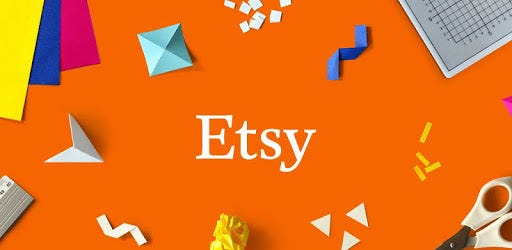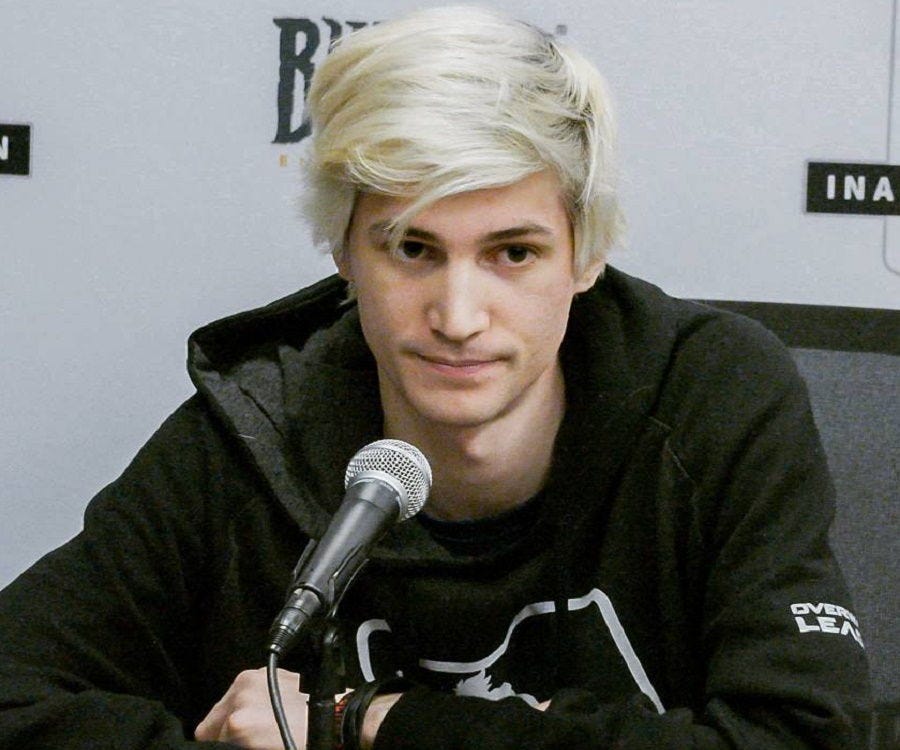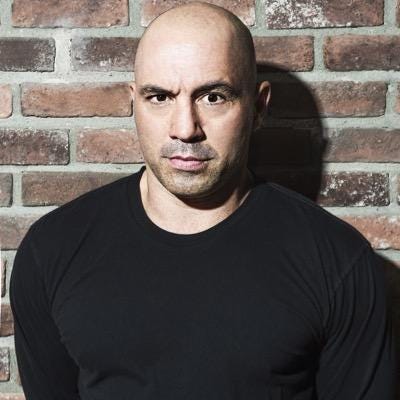Welcome to the Scuttlebutt to the new subscribers this week! If you aren’t subscribed, join the smart folks weekly in discussing business, finance, and self-improvement!
Happy Monday ✌🏼
Can you believe it’s been a year since COVID started here in the US and lockdowns began? Not only have I felt like I’ve been in some kind of time warp, but the innovation and change that has been pulled forward due to the pandemic makes this feel like another world. Our economy has undergone some drastic changes in this time, but I think it’s just getting started. The rise of the digital economy is here.
On the surface, we have as an economy have largely transitioned to work from home. We know this. There have been some benefits and drawbacks to this change. We’ve welcomed the flexibility of rolling out of bed and hopping onto the computer but in turn, had to accept the lack of social interaction that comes with a traditional work environment. I don’t care how great Zoom is, no amount of video calls will replace getting coffee with a coworker on break.
Pro tip: If you have to spend a ton of time on screens like I do, I HIGHLY recommend changing your video settings to night mode full time, or just flat out disable blue light altogether. My eyes thank me for this daily.
If you peel back the work from home layer, a much larger narrative change is occurring. In the depths of COVID, a digital transformation begun which has begun to change almost every facet of our lives. This change is evidenced by the shift in work to the creator economy and the widespread adoption of new forms of currency.
The Passion Economy
With millions out of work, people needed ways to make money and resorted to the use their own creativity to build an income. The world is calling this, ‘the passion economy’ - using your passions and interests to create a job for yourself.
There are many passion economy websites that enable people to use their talents for income. While many have been around for several years, forced quarantines grew the growing blaze of passion work to a complete conflagration. Here are a few companies leading the way.
Etsy is an online marketplace for people to make and sell any type of good from homemade masks to candles and artwork.
10.2 billion dollars in gross merchandise sales, +108% from 2019
4365 active sellers, up 71% from 2019
81898 active buyers, up 76% from 2019
Shopify is a back-office platform that supports billing and enables bringing any traditional business online.
In 2020, Shopfiy processed 119.6 BILLION dollars in gross merchandise volume (total dollar value of orders facilitated)
Fiver is a freelancing website for short to medium term contract jobs ranging from writing to design.
Active buyers of freelance work grew 3.4 million from Q4 2019 to Q4 2020, a year over year increase of 45%
Upwork, another freelancing marketplace that virtually every type of remote work.
Gross sales volume of transactions increased 21% to 2.5 billion dollars from 2019 to 2020.
The market has seen the growth of each of these companies and rewarded their stocks handsomely. This chart depicts the stock market returns for each of the four companies over the last year, with Fiverr leading the charge, up 682%.
New Media
These websites are enabling jobs and specific products. But this is just the start. Passion workers are also taking their interests to produce different forms of media. Podcasting, newsletters, and streaming are all ways for individuals to have a voice on a particular subject that is meeting a specific need for people. Not only do we have more time on our hands to consume different forms of content, but many of the individuals offer better value than traditional sources.
Here are a few people leading the creator space.
Anthony Pompliano, better known as “Pomp”, writes a daily newsletter on finance, business, and Bitcoin, to over 45,000 subscribers. There is a weekly version that is free, but the value is in the paid version. For $10 a month, you can read what he has to say, 5 days a week. That’s $450,000 per month he makes for writing a daily newsletter.
Felix Lengyel, better known online as xQc, is a professional gamer for a living. Yes, that is a thing. xQc last year netted over $2 million dollars by “streaming” or broadcasting him play video games live on the internet. The money mostly comes from paid ads, but money can also come from paid sponsorships.
Joe Rogan has operated one of the most successful podcasts of all time. Last year, in an effort to dominate the podcast space, Spotify, a music streaming company, signed exclusive rights for the podcast. The deal to Rogan was an estimated $100 million dollars.
Supporting Stories is the new Supporting Local
The content and items being created are of top quality because they’re produced by specialists in a particular space, but there’s more to it. What is really drawing people to consume from individuals is the story of where this individual came from and how they got to where they are today. We are naturally drawn to stories because it creates a personal feeling - maybe you identify with that person in some way or maybe you look up to them and wish that could be you.
Let’s take a look at an example scenario.
Let’s say that I need to buy a friend a gift for an upcoming birthday. I know two things about this friend; they love art and love to golf. I decide my gift needs to fall into one of these categories. Amazon would make buying my friend a new golf club easy - a couple of clicks and they have a gift the next day. But what about art? How do you buy your friend an art piece? Not very easily. I remember them mentioning they like a specific style but that’s about it. I’ve heard about this new website Etsy that offers custom artwork so I decided to check it out. I simply search for that style and am delivered thousands of unique art pieces.
Art isn’t the same as a golf club though, there aren’t exactly reviews for it (weirdly, it’s usually the ugliest pieces that are the most expensive, but eh who am I say). So I decide to dig into the artists. They have their Instagram profile linked to their Etsy account so I go through and browse their history. As it turns out they’re from your hometown and as you scroll through their feed, you see how they’ve progressed and displayed their work over the years. You decide to follow them because you like their style.
So what do you buy? The answer is obvious; you buy from Etsy. Not only are you able to get your friend a much more personal gift, you’re able to support someone you now believe in and will continue to follow. That’s a win win for you as a friend and as a consumer supporting a starving artist.
I see this as an extension of the ‘support local’ movement which everyone is familiar with. This is literally no different. The only thing that’s changed is our definition of local. In the same way we’d support a mom and pop diner down the street because “it’s been there forever”, we’re also able to support an artist across the country because they’re paying their way through college on art commissions (just an example). We’re no longer just supporting local, we’re supporting stories.
Trend Setters
There are a few highly innovative companies that are recently moving to capitalize on this trend. Each of these transactions happened this year.
Jan 26 - Twitter, a social media company, bought Revue, which is a newsletter platform for writers, similar to Substack which is what you’re receiving this email through.
Feb 3 - Hubspot, a marketing, sales, and CRM software company, bought The Hustle, a media company that empower entrepreneurs by identifying trends and best practices.
March 4 - Square, a payment processing company aimed at small business, buys a majority stake in Tidal, a music streaming service focused on creators.
These companies are at the cutting edge of the creator/passion economy and are making a public statement about how they see the future.
How are we paying for all this?
One thing that stands out, looking at the companies I just listed, is that two are operated by the same CEO. Jack Dorsey, CEO of Twitter and Square, has been very public about his views on this trend. Jack also has some interesting thoughts on the future of payments, and how they integrate with this economy.
In addition to public statements about his support of Bitcoin, Jack has taken even more extreme measures. Square, late last year, was one of the first publicly traded companies to add Bitcoin to its balance sheet. Every quarter, public companies are required to list their current financials and the company’s Bitcoin investment will likely be its own line item.
Other companies that have participated in this very public statement are Tesla and Microstrategy. Bitcoin’s value has risen by over 500% in the last year, partly driven by the coming widespread adoption seen here. As more and more companies take steps to include Bitcoin and other cryptocurrencies on their balance sheets, the more validity it gains in the public eye.
$1 Million Dollars…for a Paint Drawing?
The blockchain, a protocol that enables cryptocurrency use, has also sparked another unique trend and created a new market almost overnight. NFTs, or “non-fungible tokens” are unique digital versions of some piece of art or information that runs on the Ethereum (another cryptocurrency, like Bitcoin) blockchain. People are able to take something they own, turn it into an NFT and sell it. Much of the NFTs selling right now are artwork or GIFs, but its expected that this market will expand to include well maybe everything?
Many people are asking, “But can’t I just screenshot the picture or image”? The answer is yes. What’s unique about the NFT however is that the blockchain can verify the true identity of the art or whatever the token is. So let’s say you screenshot an image or GIF online and bragged to people that you “owned” it, anyone with access to the blockchain could verify whether that was true or not. Here’s where it gets weird…
People aren’t selling Picasso NFTs currently. The above photo depicts different “cryptopunk” characters created by an artist online. There are 10,000 of these individual cryptopunks available. One of them recently just sold for the equivalent of 1 million dollars. Yes, you read that right. Million. For a piece of “art” that looks like it was created in Paint.
Who else is doing this?
The NFT wave is spreading to more than just paint drawings. The NBA recently launched NBA Top Shot which are NFTs of certain moments in NBA history. A moving image of Lebron James dunking NFT recently sold for the equivalent of $208,000.
What’s interesting to me about this trend is that the only real benefit of owning one of these is to be able to say that you are the actual owner of it. I don’t see that being a particularly big deal to most people when it comes to pictures or GIFs, but there may be some merit to the idea.
Other Possibilities
Last week, the band ‘Kings of Leon’, released an album as an NFT last Friday. This got me thinking about the other possibilities this could be used for. There are many markets that showing ownership is of particular importance. I could see perhaps housing titles being on the blockchain or even possibly social security numbers. I’m no blockchain expert, but if this protocol is what everyone says it is, it could usher in a new era of validation when it comes to security.
To me, the value in the adoption of blockchain is digital verification/validation. It seems like something that could be used to prevent fraud when it comes to products, credit cards, and even your identity. Those are some much larger issues than a picture of Lebron dunking (at least to most, I hope).
Wrap Up
This digital economy is touching many places of our lives and I believe all are for good. Empowering individuals through creativity, enabling small stores to connect with a worldwide audience, and using digital currency to heighten security are all trends that aren’t slowing down, but rather gaining steam. There are so many opportunities to take hold of and run with into the future.
Lastly, I want to thank everyone who supported me through this last weekend. For those unfamiliar, I participated in a 48-mile charity run to raise money for the Wounded Warrior Project and Jump$tart Coalition. We raised $1305 which is absolutely fantastic and I’m stoked to be able to financially support some really great causes. I’m going to keep the GoFundMe open for another week to get any last-minute donations. I was recently made aware of the fee GFM charges to donate - if that’s an obstacle for any larger amount, get with me and we can make other arrangements.
Go Fund Me - Charity raise for Wounded Warrior and Jump$tart Coalition
Thanks all. Talk next week.
~Brock












